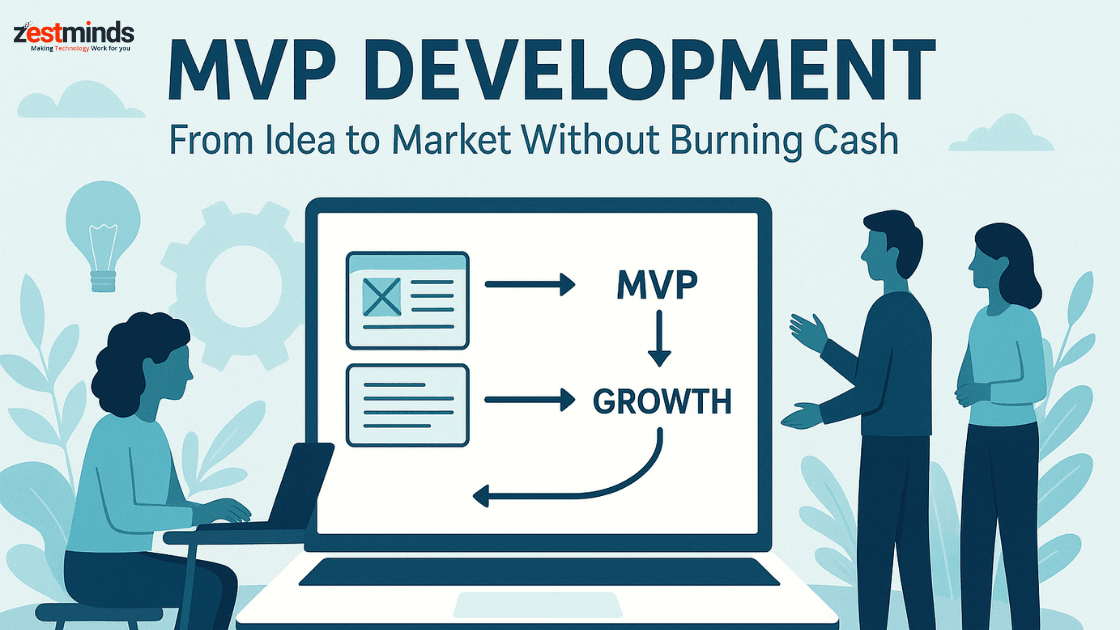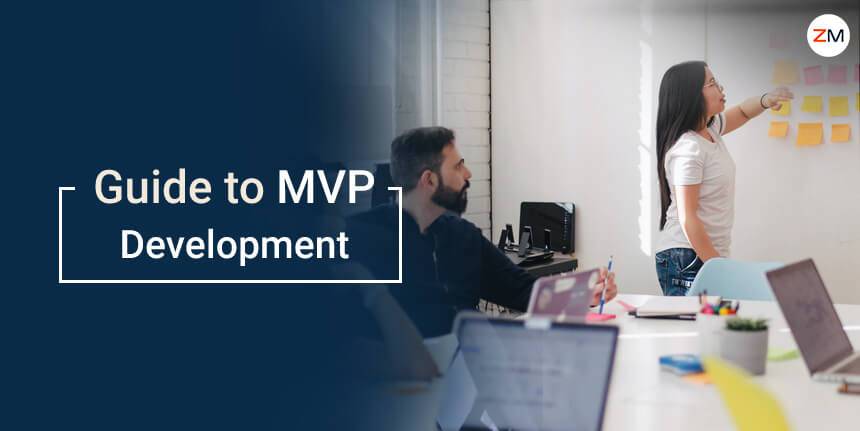AI MVP Planning Checklist for Startup Founders
Before you build your AI startup, plan your MVP right.
This 10-step checklist helps founders validate real problems, choose the right tech stack, test AI assumptions, and launch smarter, not just faster.
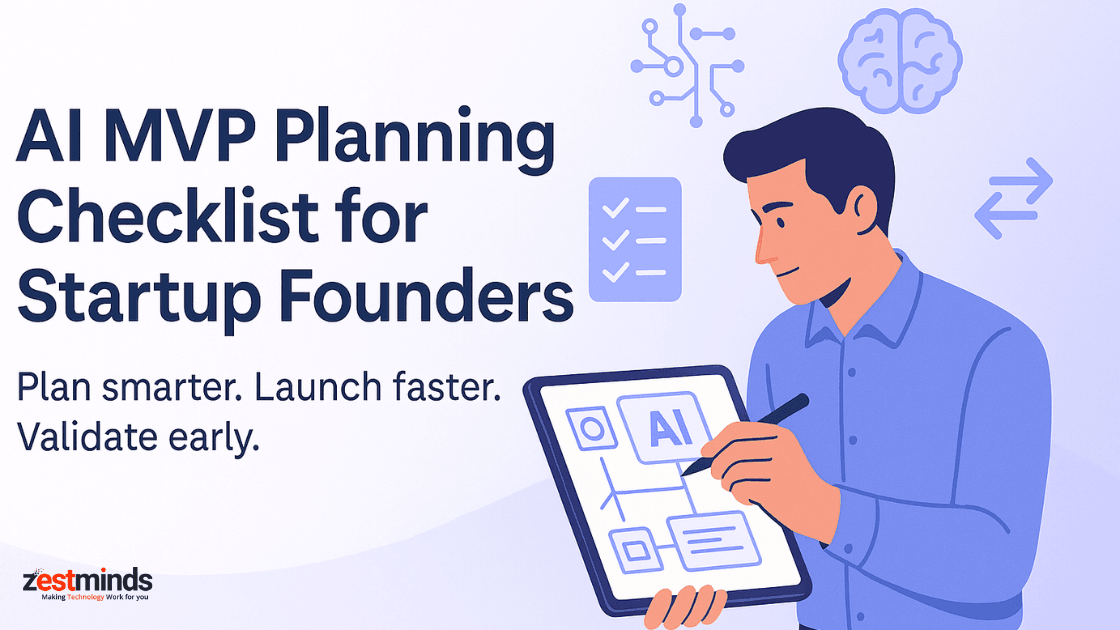
Before you write a single line of code or fine-tune a model, here's the truth: your AI startup's success depends on how well you plan your MVP.
This founder-first checklist walks you through everything, from zeroing in on a problem worth solving to validating your AI assumptions with real users.
Why Planning Your AI MVP is a Game-Changer
Let's face it, AI is hot. But most AI startups don't fail because of bad models. They fail because they build something nobody actually needs.
"Build it and they will come" only works in movies. In startups, it's "Build the right thing, and test it fast."
A well-planned AI MVP (Minimum Viable Product) helps you:
- Get real-world feedback early
- Avoid feature bloat
- Launch before your runway runs out
And in AI? You're not just building features, you're dealing with:
- Data quality
- Model reliability
- Human trust
What is an AI MVP, Really?
Think of your AI MVP as the bare-bones prototype that proves your AI-driven product idea works, for real users.
It's not:
- A fully trained custom model
- A production-grade AI pipeline
- A full app with every edge case covered
It is:
- A focused use case
- A simplified model or even mocked output
- A fast way to learn what works and what doesn't
Think of an AI MVP as a paper airplane that proves your aircraft can fly, before building a private jet.
So, Which MVP Is Better: Traditional or AI?
| Feature | Traditional MVP | AI MVP |
|---|---|---|
| Data Dependency | Low | High |
| Learning Component | None | Core to Product |
| Output Variability | Low | High |
| Testing Strategy | Feature Validation | Prediction Evaluation |
| Human Fallback | Optional | Often Necessary |
AI MVP vs Traditional MVP: What's the Difference?
Here's a quick comparison to help you understand:
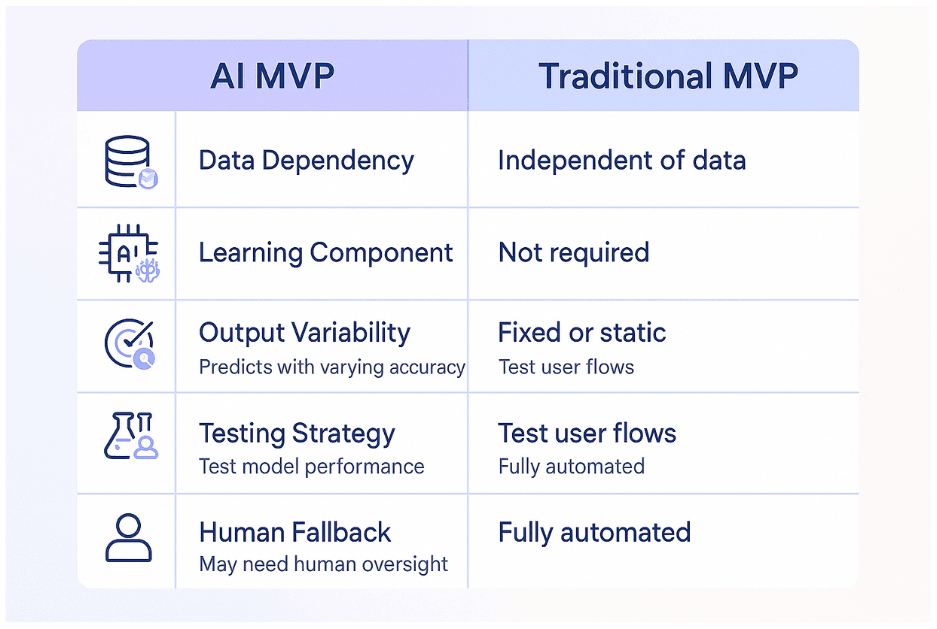
So, Which MVP Is Better?
It depends on what you're building. If automation or intelligence is core to your product, go for an AI MVP. Otherwise, a Traditional MVP is faster and cheaper to test.
Pro Tip: You can also start with a Traditional MVP and layer in AI later as you validate and grow.
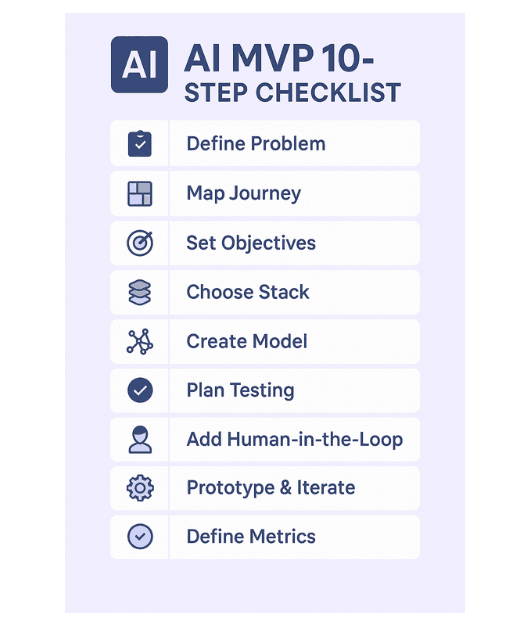
Your AI MVP Planning Checklist
This 10-step checklist will help you structure your roadmap like a pro.
1. Start With a Sharp Problem, Not a Cool Model
"We're using GPT-4 to disrupt X", is not a strategy.
"Our users waste 5+ hours per week doing Y", now you're talking.
Founders should focus on:
- A painful, urgent, solvable user problem
- Where AI can offer 10x better speed, accuracy, or automation
Example: Don't pitch "an AI tool for hiring." Pitch: "Busy tech recruiters lose candidates due to slow screening. We use AI to screen CVs 5x faster with better match scores."
2. Map Out the User Journey
Visualize your user's interaction like a storyboard. Ask:
- What's the input? (Text, image, voice, etc.)
- Where does AI intervene? (Classification, recommendation, generation?)
- What's the output? (Insight, action, result?)
Pro Tip: Use Figma or Miro to mock up the user flow. Focus on clarity, not polish.
3. Decide: Build or Buy the AI?
AI MVPs don't need fancy custom models. Most startups over-engineer v1.
Options:
- Buy: OpenAI, ElevenLabs, Hugging Face APIs
- Borrow: Use pre-trained, open-source models
- Build: Custom model (only if truly needed)
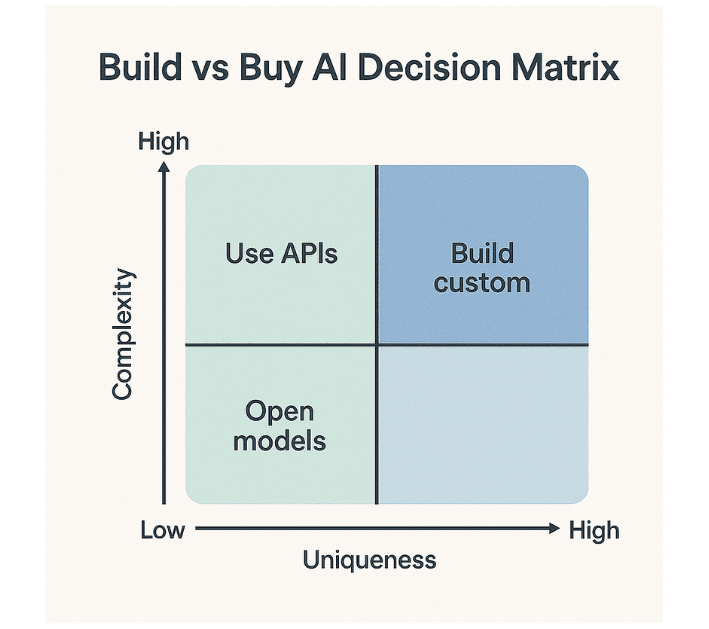
We helped a client launch an MVP using OpenAI and Vapi in just 3 weeks. See AI chatbot case study.
4. Nail the Riskiest Assumption First
Every startup has a "leap of faith" assumption. Find yours.
It could be:
- Users will trust AI-written emails
- AI predictions will be accurate enough to matter
- You can gather the right training data
Your MVP should test this assumption, not just showcase features.
5. Choose the Right Stack (Not the Hype Stack)
You're building a lean prototype, not launching SpaceX.
Recommended stack:
- Backend: Node.js, Python (Flask, FastAPI)
- Frontend: React.js, Next.js
- Infra: Docker, Kubernetes, Kafka
- Monitoring: Grafana, PostHog
- AI Tools: OpenAI, Weaviate, ElevenLabs, Vapi
See how we used this stack to Build a HIPAA-Compliant AI Hospital System .
6. Embrace the Human-in-the-Loop
AI MVPs often need human support in the early stages:
- Manual tagging
- Human fallback in conversations
- Wizard-of-Oz prototypes (where humans simulate AI)
This isn't cheating, it's smart prototyping. If it helps you validate faster, do it.
7. Define What Success Looks Like (Before You Code)
Set clear, measurable KPIs for your AI MVP:
- Accuracy (e.g., 75%+ precision)
- Response time (under 2 seconds)
- Task or activation completion rates
- User feedback or satisfaction
Use monitoring tools like Grafana or PostHog to track results.
8. Get Real About Data
There's no AI without data. You need to plan:
- What kind of data you need
- How to ethically source and label it
- How to stay compliant with GDPR, CCPA, and data regulations
Bonus: Tools like Auditzo can help you stay compliant from day one.
9. Build, Ship, Learn, Repeat
Avoid perfection paralysis. Your AI MVP should evolve quickly:
- v0: Manual flow + AI mocked
- v1: AI API plugged in
- v2: Feedback loop or data training added
- v3: Scalable, ready for growth
Learn more about building scalable web apps with Node.js.
10. Don't Scale Too Soon, Do It Right
Only scale once you've:
- Validated user need
- Built reliable AI outputs
- Established internal data/ops processes
- Seen investor or customer pull
Your MVP should earn the right to become a full product.
Recap: The 10-Step AI MVP Checklist
- Define the core problem
- Map the user journey
- Build or buy the AI?
- Test riskiest assumption
- Choose lean tech stack
- Add human-in-the-loop
- Set success KPIs
- Plan for clean data
- Build → Launch → Learn
- Scale smartly
Real-World Case Study: eSync AI Dating MVP
Problem: People ghost or fake profiles on dating apps, leading to frustration and low retention.
MVP Build:
- AI profile matcher
- Voice + text AI chatbot
- Real-time AI video characters (via ElevenLabs + Vapi)
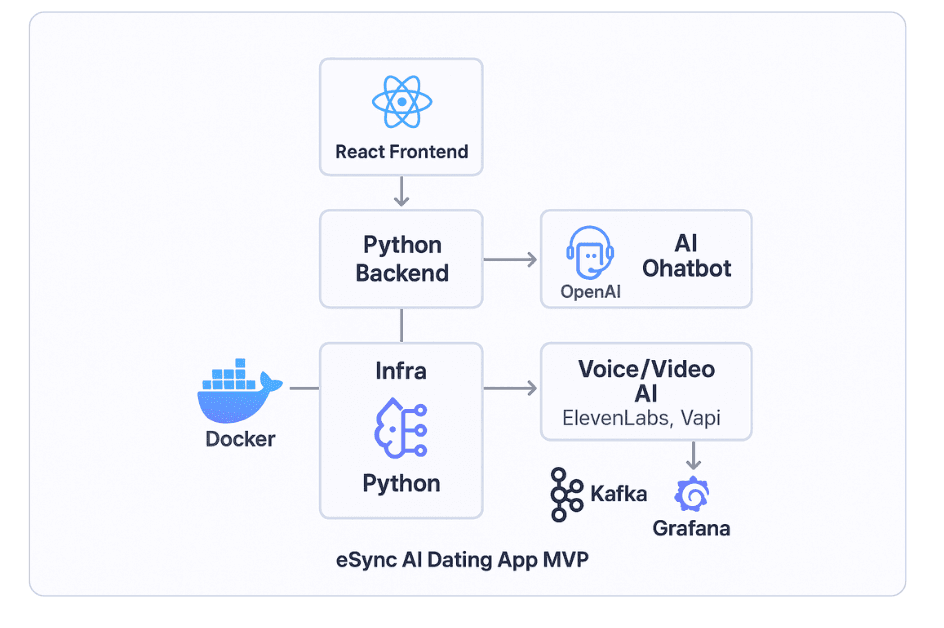
Stack: Python, Node.js, Docker, Kubernetes, Grafana
Results:
- 2.4x more user engagement
- 38% increase in match conversion
- 5-star app store rating within 3 months
Read the full eSync case study
Let's Build Your AI MVP Together
At Zestminds, we help startup founders plan, build, and launch AI MVPs that actually validate and scale.
We've worked across industries, dating, healthcare, ride-sharing, enterprise SaaS, delivering real results fast.
Book your free AI MVP strategy session now
Frequently Asked Questions
How is an AI MVP different from a regular MVP?
It includes data, machine learning, or prediction-based components, with more complexity in testing, explainability, and human-AI trust.
How long does it take to build an AI MVP?
Most early-stage AI MVPs take between 4–10 weeks depending on data, scope, and team structure.
What's the biggest mistake AI founders make?
Building the AI before validating if users even want the solution. Always validate the problem before the tech.
Read More
More real-world MVP guides from Zestminds:

Shivam Sharma
About the Author
With over 13 years of experience in software development, I am the Founder, Director, and CTO of Zestminds, an IT agency specializing in custom software solutions, AI innovation, and digital transformation. I lead a team of skilled engineers, helping businesses streamline processes, optimize performance, and achieve growth through scalable web and mobile applications, AI integration, and automation.
Stay Ahead with Expert Insights & Trends
Explore industry trends, expert analysis, and actionable strategies to drive success in AI, software development, and digital transformation.
